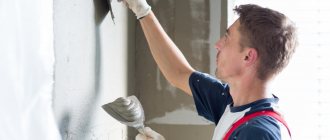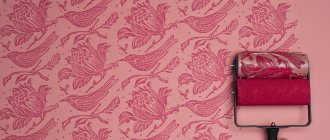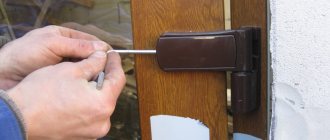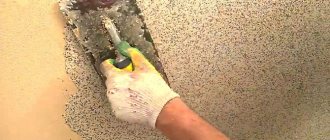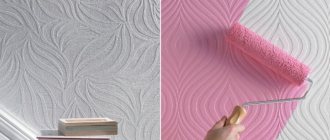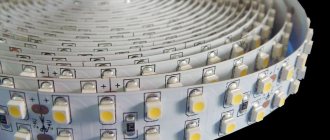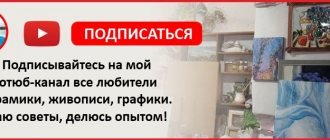What fixing compound is required?
High-quality adhesive for foam concrete is created on the basis of a specially developed list of components, which should include such fillers as:
- "Portlad" cement.
- Fine quartz sand.
- Modifiers.
- Polymers.
It is equally important to know exactly what weather the work will be done; summer product samples allow you not to worry about adhesion within the range from +5 to +30 degrees. Winter models are productive at -10 to +5 degrees; experts advise mixing the mixture in small portions, avoiding excessively rapid hardening.
Types and composition
When choosing an adhesive mixture, it is necessary to take into account the operating conditions. In accordance with this, materials are divided into 2 groups:
- winter;
- summer
In the first case, assembly adhesive for foam concrete can be used at temperatures within +5...+30°C.
At the same time, the mixture retains its properties and will serve for a long period without loss of quality. It is not recommended to prepare this type of glue in large volumes.
A high drying rate is noted - after 1-2 hours the composition begins to harden. When the consistency of the mixture changes, it cannot be used, because this will not ensure a sufficiently high-quality adhesion. When mixing summer glue, it is recommended to use white cement.
Winter mixtures are intended for use in more severe conditions: the temperature at which the substance can be applied varies between +5...-10°C. This allows you to lay foam blocks in winter without fear of reducing the quality of adhesion of materials.
The disadvantage of such adhesives is the need for their rapid consumption after mixing.
So, after half an hour the mixture will begin to harden, which will make it impossible to further use it for laying blocks. Hot water is used to prepare the glue. It also contains antifreeze components.
When using summer or winter glue, the ratio of components must be observed. Changing the amount of materials may cause deterioration in the properties of the finished mixture.
The glue contains the following components:
Fine quartz sand creates thin seams.
- fine-grained quartz sand allows you to create thin joints - up to 3 mm thick;
- Portland cement makes it possible to obtain a strong connection, and the composition hardens quickly;
- plasticizers or polymer additives are used to increase the plasticity of the finished mass, as a result it better fills leaks, which helps to increase the quality of the masonry, since the mixture covers the entire surface of the block, including small irregularities;
- special components that help retain moisture, thereby increasing the service life of the finished structure, as the risk of cracks is reduced.
How much is needed, how to calculate correctly
Any adhesive for laying foam blocks is calculated for a thickness of 2 mm, and 1 cubic meter of masonry is taken as the norm. It should be clearly understood that if the master takes on the job for the first time and does not have the proper experience, the generally accepted costs will increase.
The popular stone size is considered to be 600 by 300 by 200 mm; for this type of product, 15-23 kg of solution per 1 cubic meter will be required, but as the layer thickness increases due to defects in the material, the glue consumption for the foam block will increase. The calculation cannot be ruled out taking into account measurements of the partition; the experience of builders has shown that per 1 sq. m. you need about 1.4 to 1.7 kg of mixture, if the layer does not exceed 1 mm.
Adhesive solutions for laying foam blocks
Adhesive for laying foam blocks is often used to replace mortars. They have a high level of adhesion. which has a positive effect on the performance properties of the material. When working, it is necessary to apply the composition in a thin layer. Solutions reduce heat loss. Drying of the mixtures takes less time than required by cement compositions.
Cement mortars draw moisture from foam blocks, which leads to their cracking and destruction.
When working, it is necessary to apply the composition in a thin layer.
Differences between glue and cement mortar, why it is better
The construction scheme for structures made of foam blocks has its own characteristics that differ from the laying of the same gas blocks, and cement mortars are not very suitable for this purpose. Foam concrete has good heat-insulating properties, and cement mortar does not reach this level. In this regard, layers of cement composition promote ventilation of the room. To reduce the process, it will be necessary to additionally insulate the walls.
Or you can replace the cement mortar with special glue. The layer will be thin, providing good sealing, thereby retaining heat inside the building. At the same time, laying with glue is easier, the composition sets faster. Cement mortar uses water, it is saturated into the porous structure of the material; to avoid this, a moisture-repellent primer should also be applied.
True, the use of cement-based mortar is sometimes allowed:
- The size of the blocks is approximately thirty centimeters;
- Uneven shape of products;
- The height deviation reaches more than one and a half centimeters;
- Presence of chips.
In other cases, it is preferable to choose glue for foam blocks.
Laying with glue is easier, the composition sets faster.
Advantages and disadvantages
Special adhesive solutions for foam blocks were created for a reason; their use has a number of advantages compared to other installation options. They are:
- The composition includes fine-grained Portland cement, this allows you to obtain a thin coating, reducing product consumption;
- The distribution occurs evenly, thus achieving better fixation of the blocks;
- The optimal ratio of water for preparing glue, allowing you to obtain good humidity levels in the room, improving microclimatic conditions;
- The solution helps retain heat;
- Features a high degree of adhesion to the material;
- Resistance to natural factors;
- Setting occurs without shrinkage;
- Can be used as a putty solution;
- Ease of working with the product.
The negative side is the high cost of production.
But, if we take into account the low consumption, the cost will not be so different from the alternative option - cement mortar.
The distribution occurs evenly, thus achieving better fixation of the blocks.
Choosing a composition for masonry
When deciding which adhesive for foam blocks is better, you need to take into account several important nuances, and also first familiarize yourself with the manufacturer’s recommendations given on the product.
Depending on the goals achieved by the master, it will be necessary to give preference to a certain brand of mortar, in order not to experience inconvenience, owners of construction sites should familiarize themselves in advance with the composition requirements for load-bearing or internal partitions.
For external walls
The building can be erected in regions with harsh climatic conditions, therefore special requirements are put forward for the fixing mixture for load-bearing partitions.
The ideal option for performing manipulations would be a winter or universal model with good technical characteristics.
After mixing, the powder can set in 10-15 minutes, during which time the master will have to finish adjusting the arrangement of the elements; complete hardening was noticed after 2.5 hours.
On the market you can find packages of 25 kg, the thickness of the seam is maintained within 2-3 mm, the consumption of glue for foam blocks depends on this, it is allowed to work at temperatures from -10 to +5 degrees.
For internal carriers
When constructing such walls, maximum adhesion of the planes also plays an important role, so you need to purchase only high-quality fixing compounds.
You should pay attention to the indicators, namely:
- Resistant to moisture.
- Primary solidification rate.
- The impact of low temperatures on the frozen layer.
Most often, fillers and modifiers are added to the model for upcoming work, which make the solution more plastic, and the application or distribution of the mixture is significantly simplified.
For partitions
When performing manipulations inside a building, it is better to glue the elements using environmentally friendly compounds; the strength of the adhesion fades into the background, because changes in weather conditions will no longer have a detrimental effect on the partitions.
For convenience, you should choose a copy of the product that allows you not to rush during the installation process, there are brands that do not harden for 1-2 hours, most often the product is sold in bags of 20 kg, the seam is maintained at 3 mm, about 15 is spent on 1 cube kg.
Method of application, how to lay with glue correctly
The application tool used is a trowel with teeth. Work must be carried out under the climatic conditions indicated on the packaging. The following actions are performed:
- The glue is applied to a row of foam concrete, and both horizontal and vertical surfaces are captured.
- The leveling of the layer is carried out based on the level; for convenience, a rope is pulled according to its indicators.
- The next row is laid, position correction is carried out with a rubber mallet.
- This is done until the required height; the parts should be pressed against each other to the maximum.
- In hot weather, you can spray the blocks with water.
- The masonry should dry for 24 hours.
Instead of a trowel, you can use a trowel; leveling is carried out with a notched trowel.
Leveling the layer is carried out based on the level.
Glue for foam concrete blocks will make the structure more durable and warmer. Experts recommend laying with glue; cement mortar will not allow the blocks to last that long. The choice of adhesive solution should be given special attention, because the quality of all the work done depends on its quality. There are many types of suitable products on the market; everyone can easily choose the best option for specific conditions.
Varieties of compositions with technical characteristics
Having calculated the glue for the foam block, calculating the consumption per 1 cubic meter using a calculator or yourself, you should move on to studying the indicators of the finished solution.
In addition to temperature conditions, it is necessary to take into account the rate of hardening of the prepared mixture; summer product samples do not lose elasticity for up to 2 hours, but winter ones will remain in working condition for no more than 40 minutes, during which time the location of the stone is adjusted and the level is displayed.
The presence of modifiers will indicate that the layer will be protected from cracks and the liquid will be retained in the solution for as long as possible. Polymers are needed to create a composition with better consistency, capable of filling even small pores.
What to glue foam blocks to, popular brands
Not all brands of fixing agents are in demand; after lengthy searches, professional builders settled on the best examples of products; the list is worth taking note of.
In addition to the brand names, it would not be superfluous to give an approximate price, the situation is like this:
- Ceresit 300 rubles.
- Volma 230 rubles.
- Fund 250 rubles.
- Ytong 350 rubles.
- KREISEL 275 rubles.
Products are most often packaged in paper bags of 20-25 kg, packages with an indicator of 50 kg have long ceased to be popular due to their large weight, and reduced samples can easily be carried by one person.
Preparation of mortar for aerated concrete
The technology for preparing an adhesive solution with your own hands is quite simple. Water is poured into the preparation container in the required volume and the dry mixture is gradually poured in with constant stirring. The required proportions can be found on the packaging.
Mixing the solution can be done manually, but the most convenient option is to use a special drill attachment. It is necessary to achieve complete homogeneity of the mass. Next, the finished solution is allowed to stand for about 10 minutes and mixed again.
Kneading must be done in small portions, since the glue sets quickly enough. During operation, the mass is periodically mixed, while adding water to the finished solution is strictly prohibited. The finished solution begins to be applied to the second row, since the sand mixture is laid on the first to achieve initial leveling.
Composition consumption per cubic (1m3) and square meter of masonry
When considering how much glue needs to be diluted per 1 m3 in order to fasten wall elements together, you can pay attention to the average consumption rates, they range from 15 to 23 kg.
When it comes to the correct approach to measuring the area of the future partition, it will be difficult to do without a tape measure and the help of a partner. Having derived the total amount, it is important to understand that the average figures assume the application of a layer 1 mm thick, then the solution is consumed at 1.5 kg per square meter. m.
How to lay aerated concrete blocks - step-by-step instructions
Laying walls made of aerated concrete blocks is somewhat different from work carried out using sand mortars. The main rule that is observed during work is to apply the adhesive only to a carefully prepared surface of the block. It should be free of dust, ice and other foreign substances. The main stages of work consist of the following steps:
- inspection and cleaning of blocks,
- preparation of adhesive composition,
- applying the solution to the blocks,
- installation of blocks and their alignment,
- cleaning masonry from excess glue.
It is worth noting that preliminary moistening of aerated concrete blocks during work is not required. However, in hot weather it may be necessary to slow down and stabilize the hardening of the mortar. It is advisable to cover the finished masonry with a tarpaulin or burlap until the glue has completely set.
What should be the thickness of the glue layer?
The ideal indicator is to apply the composition at 3 mm, but to save building materials, most owners decide to reduce the layer. When working with load-bearing external walls, you must not spare the mixture, but also avoid the formation of smudges.
Seams that are too voluminous will become cold bridges, which will negatively affect the heating of the building. Inside the frame, you can make a layer of 1 mm; packages from different brands indicate specific information about this; if you strictly adhere to it, a person can count on reliable adhesion between the planes.
How to minimize the thickness of the adhesive layer
When figuring out how much glue you need to spend in order to fit into the allocated budget and not deviate from the instructions on how to properly lay masonry, you should remember two very effective techniques.
A special spatula with serrated edges will help you save a lot and not experience inconvenience when performing manipulations.
When faced with uneven surfaces on the foam block, the consumption will also increase; in order not to level out the differences with the solution, a coarse brush is first purchased for cleaning the surface.
The material is easy to scrape even without power tools; the porous structure of the element can be easily removed.
Features and components of glue
Some people, in order to save money, lay blocks using ordinary cement mortar. The use of such a mixture does not reduce monetary costs, but leads to a decrease in the strength of the wall. The water in the cement mortar freezes, which reduces its quality. Specialized winter adhesive for aerated concrete has characteristics that are ideal for laying aerated concrete. These include:
- high adhesion to the surface;
- plastic;
- moisture resistance;
- frost resistance;
- high speed of hardening.
Characteristics of winter adhesive for aerated concrete
All these characteristics of the solution are achieved due to a certain composition. The composition of winter glue includes:
- Portland cement. Acts as the main binder.
- Sand. This substance is a fine filler. Manufacturers use quartz sand, the maximum particle size of which is no more than 0.63 mm.
- Polymer additives. Necessary to improve the adhesive properties of the mixture.
- Modifiers. They make the solution moisture resistant and less thermally conductive.
- Special antifreeze additives. These additives make it possible to use adhesive for aerated concrete even at sub-zero temperatures.
Winter glue is gray in color, so you need to take into account that the masonry joints will differ significantly in color from the blocks themselves. Anti-frost additives give the glue its gray color.
Advantages of winter adhesive for aerated concrete
Advantages and disadvantages of adhesive mixtures
Among the advantages of the composition, experts note the following:
- Low consumption due to fine fraction.
- Uniform laying of material.
- Dilution does not require a lot of water; the liquid quickly evaporates from the walls.
- The thermal conductivity of the partitions is reduced, which makes the home very warm.
- High quality and reliable design.
- The release form of 20-25 kg does not cause any difficulties during transportation.
- The components of the mixture are safe for human health.
There was a “fly in the ointment”; the disadvantage of the product is the high price in relation to the cement-sand mortar that is familiar to many people.
The process of building walls is complicated by ideally adjusting the plane of the element with a brush, because filling the potholes takes a lot of fixing compound.
Expert advice on choosing and laying the mixture
The masonry mixture is very important during construction work; the strength and technical characteristics of the constructed building depend on it.
When making a choice, it is worth taking into account the opinion of experts in this field; they know better how to correctly place foam blocks on the solution and what to pay attention to when removing them when purchasing.
- The materials used must be of only high quality. Lower quality cement has a negative impact on the strength of the mortar.
- Ready-made adhesive mixtures should be stored in a dry place; it is better to choose materials from a well-known brand. This guarantees the correct preparation of mixtures and proper storage conditions for finished products.
- It is important to carefully monitor the proportions of materials when mixing the solution and follow all instructions;
- When making your own solution, you should use special additives and components that increase the strength and elasticity of the material.
- For non-residential premises - garages, fences, outbuildings, and others where thermal conductivity is not of great importance, it is better to take cement mortar - this will save cash. For residential premises, the best option would be a ready-made adhesive mixture
It’s up to you to decide what is best to lay foam blocks on; cement mortar and a specialized adhesive mixture are similar to each other. They have a large list of advantages, but not many disadvantages. Their main difference is the cost and thickness of the seam between the blocks.
There are no special requirements for the level of skill, the work can be easily completed by any person, the main thing is to follow the instructions and recommendations when choosing the material and its preparation.
Which adhesive for foam blocks is better
A list of models that are very popular among professionals with a description of the technical characteristics and features of the products will help you make your choice.
The information should be studied long before going to a specialized store to purchase materials.
Volma
Among the components of the brand you can see fine sand, high-quality cement and a lot of dispersion additives that make the solution plastic.
The finished composition will perfectly level the base, since the manufacturer allows you to apply a layer of 2 to 5 mm. The product is used when working with cellular foam concrete and other samples of building material.
Titanium foam adhesive
It is quite convenient to apply the product due to the special container; compact cylinders will not take up much space on the construction site, and the adhesion of the mixture is at a high level.
When applying the fixing composition, they resort to the distribution of stripes, the seam is created very thin, and good sealing of the walls is achieved. Resistance to penetration of moisture and extraneous noise is noted; low temperatures are not dangerous for a completely frozen layer.
Knauf
The composition includes all the necessary additives and polymers, the manufacturer took gypsum as a basis, concrete blocks lay flat, and the partitions last for decades. The brand has long proven itself to be the best, which has attracted the attention of professional builders.
To work, you do not need to have any special skills; beginners will only need to follow the instructions and evenly distribute the mixture on the stone, allowing the seams to harden.
Ivsil block (ivsil block)
Experts advise distributing the prepared solution to a thickness of 2 mm, since the product sets in 15 minutes, you need to work quickly and immediately adjust the location of the blocks.
When deciding what is best to lay foam concrete on, the best product sample would be dry powder for further mixing Ivsil block; it is suitable for installing grooved or unadded specimens.
Tile adhesive
When working outside in winter, it is important to purchase a model that can withstand low temperatures, but most often such a fixing compound is used inside the building frame.
A product from a trusted brand is ideal for walls made of foam blocks with smooth edges; an acceptable deviation is considered to be no more than 1.5 mm.
Main stages of work
After choosing and purchasing glue, you can get to work. Let's consider the main stages, as well as the technological features of laying foam block walls using an adhesive composition.
Work should begin with surface preparation. It must be free of dust and dirt, which may adversely affect adhesion.
Required set of tools
Preparing the mixture
The second stage in the work is preparing the adhesive mixture. You should first carefully read the instructions and follow all the manufacturer’s instructions, since if the proportions of the dry composition and the added liquid are incorrect, the properties of the material can significantly deteriorate.
To mix, you will need a bucket (or other suitable container) and a drill with a special attachment. The dry mixture and water are mixed, forming a thick, viscous mass. After preparation, you must begin work immediately to avoid setting the solution.
Advice! If it happens that you did not have time to develop the mixture and it thickened significantly or completely hardened, you should not dilute it with water. Many manufacturers warn consumers against such actions, citing the loss of properties and qualities of the material. It is better to mix the glue in small portions to avoid such troubles.
Masonry technology
The next step will be the process of applying glue and laying the block on it. To improve adhesion, you can first use a deep penetration primer.
The first block is laid from the corner. With a perfectly level foundation, you can choose any angle; in other cases, the highest point is determined. This is where we should start.
The layer of glue, of course, in this place will be the thinnest. Foam concrete blocks located in the corners will serve as a guide for further work.
Installing the first reference block
A cord is pulled between these blocks. If the distance is too large (more than five meters, for example), it is recommended to install additional beacons at the joints of load-bearing walls.
The first row of the block is laid exclusively on cement mortar. This will improve the strength of the structure and adhesion to the foundation, and will also help the developer save money, since the use of glue when laying the first row is quite impractical due to its higher cost compared to cement mortar. It can also be used to correct imperfections in the foundation of the house, such as unevenness.
The solution is applied, and then the adhesive mixture using a notched trowel directly in a row or on the top and side surfaces of the foam block. You can and should control the process using a level and a rubber hammer.
The first layer of the block should have a layer thickness of about 1-1.5 centimeters horizontally and a little less vertically, but this largely depends on the geometry of the blocks themselves. The seams must be completely filled with mortar to avoid the appearance of cracks.
During operation, the block can be cut to the desired size and given a certain shape.
Cutting foam block during laying
After laying the first row, it is subjected to reinforcement. The second and subsequent rows are laid according to the same principle, only using an adhesive composition.
Laying foam blocks: second row from the corner
Excess glue is removed and returned to the container with the main adhesive mixture, and used again for greater savings.
How to lay foam concrete on glue
Advice! During laying, try to stir the solution occasionally, as it tends to separate.
After applying the glue, the blocks are pressed tightly against each other to avoid gaps. The glue begins to set in about 10-15 minutes. During this period of time it is possible to correct the evenness of the foam blocks. It should be checked after laying every third or fourth product.
The masonry usually hardens completely within 24 hours, but this indicator can vary significantly depending on weather conditions. If the walls are erected not in one, but in two layers, then bandaging is required between them.
How to glue foam blocks: options, pros and cons, as well as recommendations and prices
The issue of working with foam block material always causes a lot of controversy, in the sense that many builders still cannot decide how exactly to lay the block, or rather, on what.
We place the foam block on different solutions
There are only two options, it is either a simple cement mortar or glue. Let's consider today an option in which our main solution will still be glue .
Why glue
First of all, when laying foam blocks with your own hands, the dimensions of the material catch your eye. Unlike, for example, brick, foam block has large dimensions, and this imposes special features in the work.
Let's start from the fact that when using cement mortar, we get a seam within 13 mm, and provided that the wall thickness is less than that of a brick, we get an excellent cold bridge.
In other words, the wider the jointing is, the more cold the wall lets through the seam, and this despite the fact that the foam block itself is an excellent heat-insulating material.
Now let's see what kind of seam we can get when using glue? And it comes out at 3 mm! That is, the jointing is almost 4.5 times thinner!
Important! Such jointing is also possible due to the fact that special additives are added to the foam block adhesive, which increase both the strength and ductility of the solution.
Now about the pros:
- Much less glue consumption. With such jointing, consumption is reduced by at least 4 times compared to cement. Let us note right away that the glue consumption for foam blocks per 1 m3 in this case will be at the level of 16-20 kg. For simplicity, let's say that this is approximately a bag of glue.
- The glue binds the masonry quite firmly.
- The possibility of mold development in the joint area is completely eliminated.
- The reduction in total consumption suggests a significant reduction in price.
- Simplicity and ease of use, this allows us to speed up the construction of walls several times.
Important! During the operation of the house, we will be able to notice that the thickness of the seam had a direct impact on the thermal insulation performance and significantly reduced heating costs.
How to count
The easiest way, of course, is to proceed from what glue manufacturers display on their products. And there it is precisely indicated that we need from 16 to 20 kg of mixture per cubic meter.
The same applies to the area, here the glue consumption for foam blocks per 1 m2 will be on average 6 kilograms.
Important! When making calculations, it is necessary to make allowances for the professionalism of the work being carried out, as well as for how the masonry will be carried out: if it is a continuous layer, this is one expense, if it is a trowel with teeth, this is 30% less.
Now let’s take the example of a house with an attic for calculation and use its example to calculate exactly how much glue we will spend. To make it easier to calculate, our example will be 10x10, this is what we start from.
- We calculate the perimeter of the house. This is the addition of all sides of the wall, that is, 40 meters.
- We multiply the length by the height, it is 3 meters and we get 120 square meters.
- Based on an average consumption of 6 kilograms per square, we get 720 kg for the entire area.
Important! The calculation of consumption is very approximate; some adhesives, for example, cost 4.5 kg per meter. Therefore, now we are considering the calculation mechanism, and not the final numbers.
This is our figure for the first floor, excluding window openings and doors. Let's not count much, just subtract 20% of the area from the total, and we will have 576 kg. Just the approximate consumption of glue for a foam block in the masonry of the first floor 10x10.
Materials and tools
To lay foam blocks when building a house using an adhesive mixture, in addition to the blocks themselves and the adhesive, you will need the following equipment:
fittings;- polyurethane foam - for sealing cracks and adjoining roofing material to walls;
- building level and plumb line;
- order;
- rubber hammer;
- drill with an attachment - for mixing the solution;
- trowel, spatula, bucket, container - for storing and working with glue;
- hacksaw, saw, hammer, pick - to adjust the size and shape of the foam block.
Average cost in Russia
- The price of the adhesive mixture depends on the manufacturer, on average about 250 rubles per 25 kg bag.
- The price of cement is on average 300 rubles per 50 kg bag. The solution is not sold in finished form because it hardens quickly. Prepare the masonry mixture on site in portions, as needed.
- Sand prices depend on its condition. For the mixture, it is recommended to use washed (about 450 r/m3) or sifted (about 400 r/m3) material.
